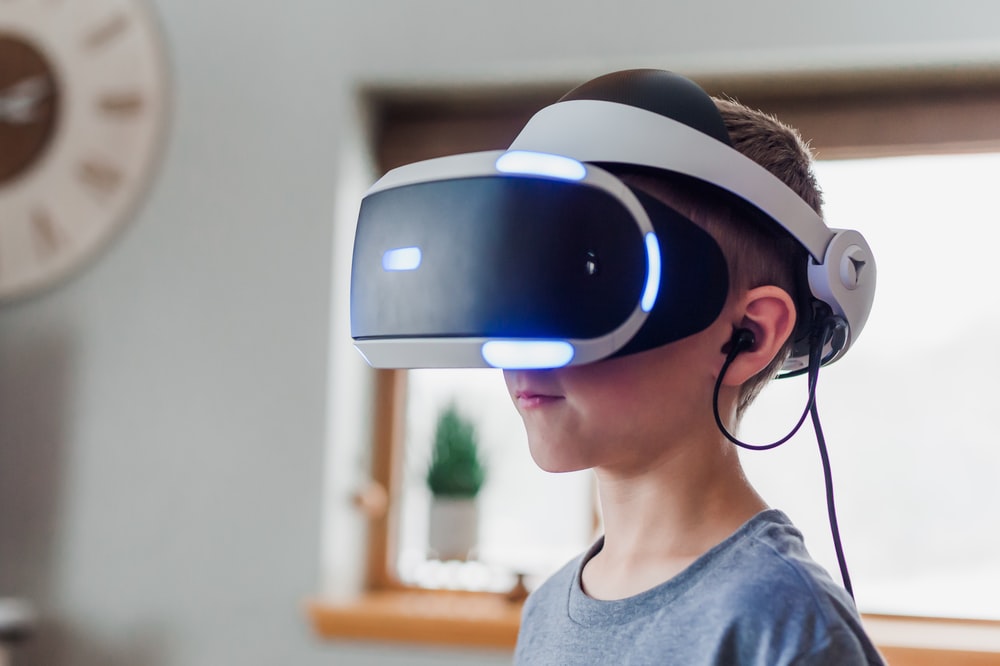Gauging the Reality of Emerging Tech in Classrooms

by Riddhi Divanji & Lisa Castaneda
As virtual reality becomes more prevalent in K–12 educational spaces, developers continue to create content that enables students to partake in a host of realistic and fantastical simulations. Students can visit new places, create 3D artwork and conduct science experiments in ways that might not otherwise be possible. We have seen classroom applications of VR that fully utilize the technology to engage students in rich and novel immersive learning experiences. We have also seen VR used to accomplish learning goals that may have been better approached using traditional methods or analog media. This raises the question, how can we use VR to engage and add unique value to student learning? There are many myths about VR that are often used to justify its utility as an educational technology. Here we address three common fallacies.
FALLACY: 360 VR Video Field Trips Give Students an Understanding of a New Place and Culture
We have learned from our conversations with students and teachers that without the proper instruction and reflection around these virtual trips, students miss out on the physical and social context of the field trip destination.
In our work with VR, we have frequently seen educators use 360-degree videos for virtual field trips. Educators may use phone-based headsets, such as Google Cardboard, or more advanced headsets that plug into computers. However, students report that watching a 360-degree video doesn’t necessarily immerse them in a different place and culture. In our research, students often questioned why they were asked to put on a VR headset when a projector or desktop screen could have been used instead.
We asked middle and high school students whether they felt as if they gained a better understanding of the people and places they encountered on their virtual field trips, and their responses were mixed. Some students reported that VR gave them an opportunity to develop a “firsthand” perspective, while others reported that VR was not a good substitute for actually visiting a new place and interacting with real people.
FACT: Intentional, Strategic Use of VR Can Deepen Students’ Understanding
All technological tools used in classrooms should “enhance, engage, and extend learning,” author Liz Kolb, lecturer and research associate at the University of Michigan, writes in Learning First, Technology Second: The Educator’s Guide to Designing Authentic Lessons.
If we are simply importing a quiz into a virtual environment for no pedagogical reason beyond increasing “engagement,” we must pause and reflect on whether that will genuinely enhance or extend student learning. A worksheet is still a worksheet, even when it is placed into a virtual environment.
It’s a challenge for teachers to develop and integrate assessments that are sensitive to the learning outcomes they hope VR activities will facilitate. A recent study from foundry10 indicates that teachers struggled to gather specific evidence demonstrating what students learned after engaging in VR experiences. Many falsely perceived high engagement with VR as an indicator that students had greater understanding of the subject or concept. To create real value for student learning with VR, educators will need to be vigilant when assessing whether the technology is deepening understanding of a topic or just making it more fun.
MORE ON EDTECH: How virtual reality can help students meet learning goals.
FALLACY: Technological Implementation is the Biggest Hurdle to Using VR in the Classroom.
There actually are many hurdles that educators face when implementing VR in the classroom. Technical troubleshooting is only one of those.
In a 2018 study, we interviewed 17 teachers who used VR in their classrooms three times over the course of the school year. Our interviews focused on understanding the teachers’ approaches to implementation, the uses of VR in their classes and their perceptions of VR’s value as a classroom technology. Throughout the school year, we heard teachers’ attitudes toward VR consistently shift from enthusiasm to frustration, and we decided to look deeper into this pattern.
While new and exciting, VR presented many implementation hurdles that exceeded the typical technological challenges of integrating a new tool. The challenges are summarized in this infographic. Teachers needed administrator approval, IT support and parent buy-in to get VR to work for their students. They also needed physical classroom infrastructure to support VR’s electrical requirements, sufficient time to find relevant VR content for instruction, and alternative learning plans for students who could not or did not want to use VR.
Resolving the monumental logistical challenges of implementing VR for instruction can dominate the conversation. Then assessing the actual value the technology brings to students and their learning outcomes becomes an afterthought. For this reason, it’s important to consider the entire ecological context of the school as you work to build VR into your teaching practice.
Our research and work with VR in the classroom have led us to ask VR content developers and educators, “Did you really need virtual reality for that?” As educators and researchers, we are both cautiously optimistic about the technology’s potential to strengthen classroom learning and skeptical of existing claims of how exactly this is achieved.

